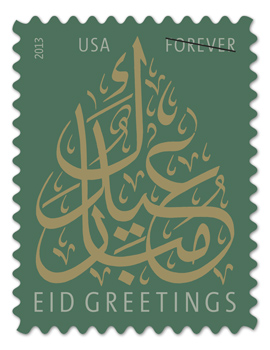 Source: New York Times
Source: New York Times
Louise Story
[…] Grocers and consumer product companies are considering ways to adapt their goods to Muslim rules, which forbid among other things, gelatin and pig fat, which is often used in cosmetics and cleaning products. Retailers are looking into providing more conservative skirts, even during the summer months, and mainstream advertisers are planning to place some commercials on the satellite channels that Muslims often watch.
Marketing to Muslims carries some risks. But advertising executives, used to dividing American consumers into every sort of category, say that ignoring this group — estimated to be about five million to eight million people, and growing fast — would be like missing the Hispanic market in the 1990s.
“I think Muslims have had to draw into themselves,” said Marian Salzman, executive vice president and chief marketing officer of JWT, a large advertising agency in the WPP Group that plans to encourage clients like Johnson & Johnson and Unilever to market to American Muslims. “It puts an increased burden on a marketer post-9/11 to say, ‘Look, we understand.’ ”
Companies in the Detroit area, where there is a dense population of Muslims, are leading the change. A McDonald’s there serves halal Chicken McNuggets; Walgreens has Arabic signs in its aisles. And now, Ikea, which recently opened a store in the suburb of Canton, Mich., that has had trouble attracting as many Muslim customers as it had hoped, has been touring local homes and talking to Muslims to figure out their needs.
 |
The store there plans to sell decorations for Ramadan next fall and is adding halal meat to its restaurant menu, or meat that is prepared according to Islamic law. Catalogs in Arabic are being planned, and female Muslim employees are expected to be given an Ikea-branded hijab, to wear over their head if they wish. [more]
Please click here to read the whole article and to watch a related video clip.
Marian Salzman has also written about marketing to Muslims in the USA. Here is a quote from his article:
Over the past year, we’ve become acutely aware that most brands and marketers are turning a blind eye to the multibillion- dollar American Muslim market. Maybe they don’t recognize that there is an opportunity. Maybe they harbor some of the anti- Muslim fears and prejudices that are so apparent in American media and public life. Maybe they are scared of offending American Muslims, or they fear that by embracing Muslim consumers, they will alienate non-Muslims. Whatever the reason, they are failing to connect with consumers whose combined disposable income is well in excess of $170 billion a year in the U.S. alone. […]
Why this group? Why not another growing niche consumer segment that may prove less challenging to understand? Let’s face it: Religion is a sensitive issue, and religion and business seem like an uncomfortable combination. Why not steer clear of Islam rather than risk offense?
Four reasons spring to mind immediately. First, Muslims are numerous and demographically vigorous, with high birth rates and a young age profile. While most live in Muslim-majority countries, populations in the U.S. and U.K. are growing. Estimates of the Muslim population in the U.S. vary, but the most widely cited numbers are in the range of 6-8 million, or 2 percent of the population, roughly equal to the population of Jordan or, ironically, Israel. In the U.K., 2001 census data puts the Muslim population at between 1.8 and 2.2 million, or about 3 percent of the population. And while much of the world is aging, British Muslims have the youngest age profile among the country’s religious groups—about one-third of Muslims were under 16 when the 2001 census was conducted.
In the U.S., the sheer demography is compelling: Where 67 percent of the total U.S. population is over 40, 67 percent of the U.S. Muslim population is under 40. Also, 67 percent of U.S. Muslims have a college degree, versus 44 percent of the general population. The U.S. average income is $42,000; 66 percent of U.S. Muslims earn over $50,000, and 26 percent over $100,000, according to Allied Media Corp. [more]
Please click here to read Salzman’s article on “Art & Commerce: Marketing to Muslims”.
Please also read Muslims Flex their Market Muscle.



















Posted on May 2, 2007
0